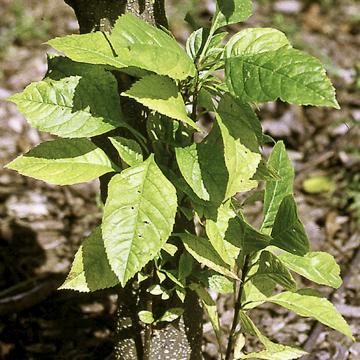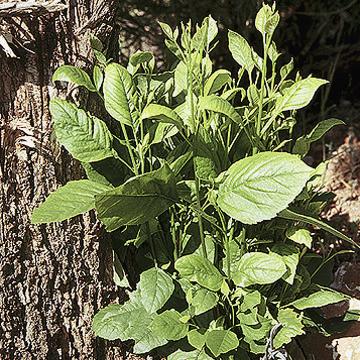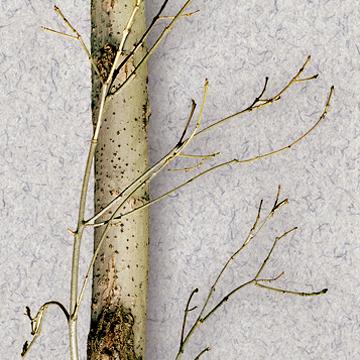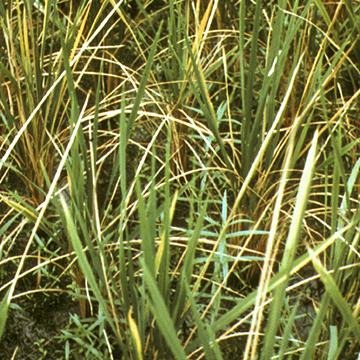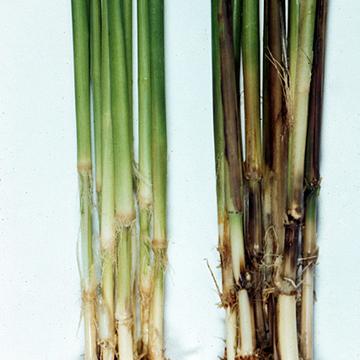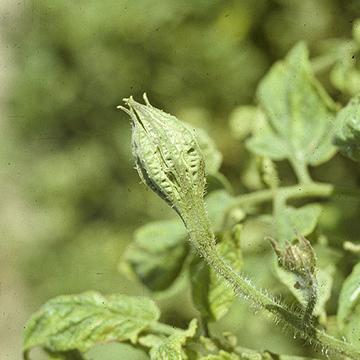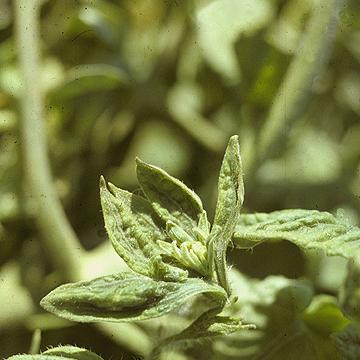DISEASE: Ash yellows
HOST: Ash
Ash sapling with basal sprouts and chlorotic leaves.

Ash yellows | Ash
DISEASE: Ash yellows
HOST: Ash (Fraxinus pennsylvanica)
PATHOGEN: 'Candidatus Phytoplasma fraxini'
PATHOGEN SYNONYM: Phytoplasma Ash yellows group
SOURCE: W. Sinclair
DISEASE: Ash yellows
HOST: Ash
Witches'-broom at base of declining tree.
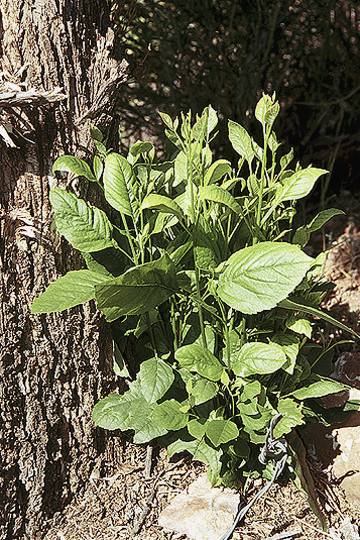
Ash yellows | Ash
DISEASE: Ash yellows
HOST: Ash (Fraxinus velutina)
PATHOGEN: 'Candidatus Phytoplasma fraxini'
PATHOGEN SYNONYM: Phytoplasma Ash yellows group
SOURCE: W. Sinclair
DISEASE: Ash yellows
HOST: Ash
Forest of declining trees, some chlorotic and others with dieback.
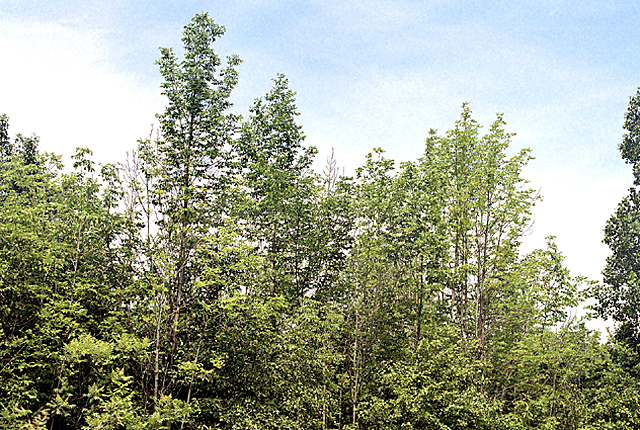
Ash yellows | Ash
DISEASE: Ash yellows
HOST: Ash (Fraxinus americana)
PATHOGEN: 'Candidatus Phytoplasma fraxini'
PATHOGEN SYNONYM: Phytoplasma Ash yellows group
SOURCE: W. Sinclair
DISEASE: Ash yellows
HOST: Ash
White ash with deliquescent branching.
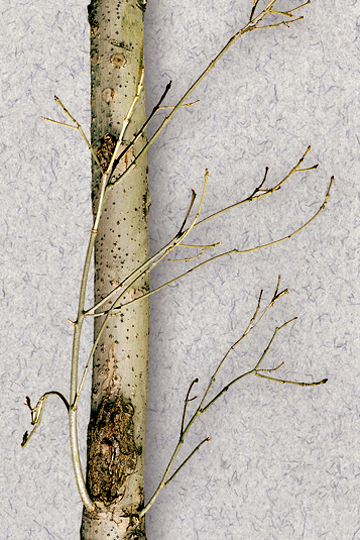
Ash yellows | Ash
DISEASE: Ash yellows
HOST: Ash (Fraxinus americana)
PATHOGEN: 'Candidatus Phytoplasma fraxini'
PATHOGEN SYNONYM: Phytoplasma Ash yellows group
SOURCE: W. Sinclair
DISEASE: Bacterial foot rot
HOST: Rice
The disease causes sheaths to turn dark brown and rot; dead leaves droop. Nodes, culms, and crowns also decay, and infected tillers are easily detached from the crown. Culms and internodes turn black.

Bacterial foot rot | Rice
DISEASE: Bacterial foot rot
HOST: Rice (Oryza sativa)
PATHOGEN: Dickeya zeae
PATHOGEN SYNONYM: Erwinia chrysanthemi pv. zeae
SOURCE: M. Goto
DISEASE: Bacterial foot rot
HOST: Rice
Decayed culms (right) and healthy culms (left). Leaf sheaths of infected plants exhibit dark brown decay and attached leaves turn yellow and wilt.
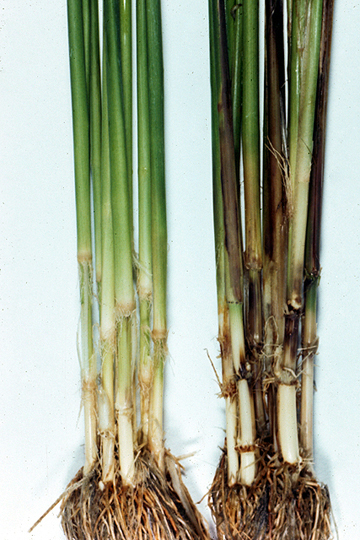
Bacterial foot rot | Rice
DISEASE: Bacterial foot rot
HOST: Rice (Oryza sativa)
PATHOGEN: Dickeya zeae
PATHOGEN SYNONYM: Erwinia chrysanthemi pv. zeae
SOURCE: M. Goto
DISEASE: Tomato big bud
HOST: Tomato
Characteristic symptoms are swollen, apical stems and stunted leaves. Apical stems are generally thickened and assume a stiff and erect growth habit. Internodes are shortened and flower buds are greatly enlarged.
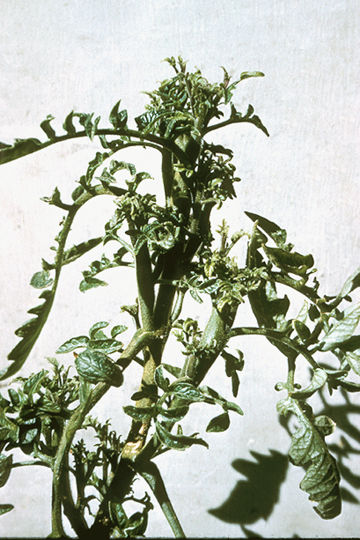
Tomato big bud | Tomato
DISEASE: Tomato big bud
HOST: Tomato (Lycopersicon esculentum)
PATHOGEN: 'Candidatus Phytoplasma asteris'
PATHOGEN SYNONYM: Phytoplasma Aster yellows group
SOURCE: D. Teakle
DISEASE: Tomato big bud
HOST: Tomato
Symptoms are enlarge sepals that do not separate. Flower buds stay green and do not develop into fruit. Leaves are small and chlorotic.
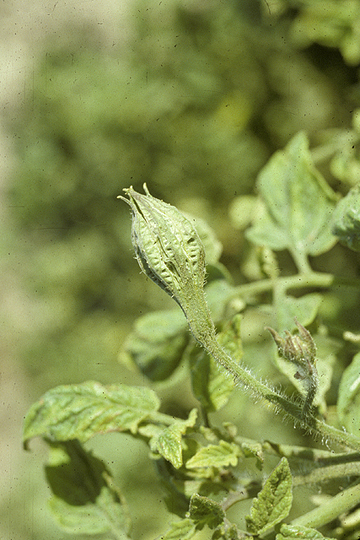
Tomato big bud | Tomato
DISEASE: Tomato big bud
HOST: Tomato (Lycopersicon esculentum)
PATHOGEN: 'Candidatus Phytoplasma asteris'
PATHOGEN SYNONYM: Phytoplasma Aster yellows group
SOURCE: S. Thomson
DISEASE: Tomato big bud
HOST: Tomato
Abnormal flower bud with greatly enlarged sepals. Sepals do not separate, fruit is not produced, and apical growth is upright.
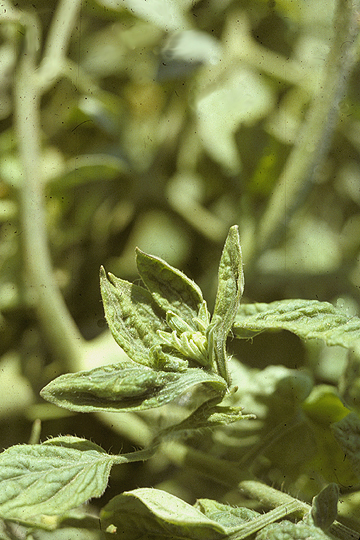
Tomato big bud | Tomato
DISEASE: Tomato big bud
HOST: Tomato (Lycopersicon esculentum)
PATHOGEN: 'Candidatus Phytoplasma asteris'
PATHOGEN SYNONYM: Phytoplasma Aster yellows group
SOURCE: S. Thomson


